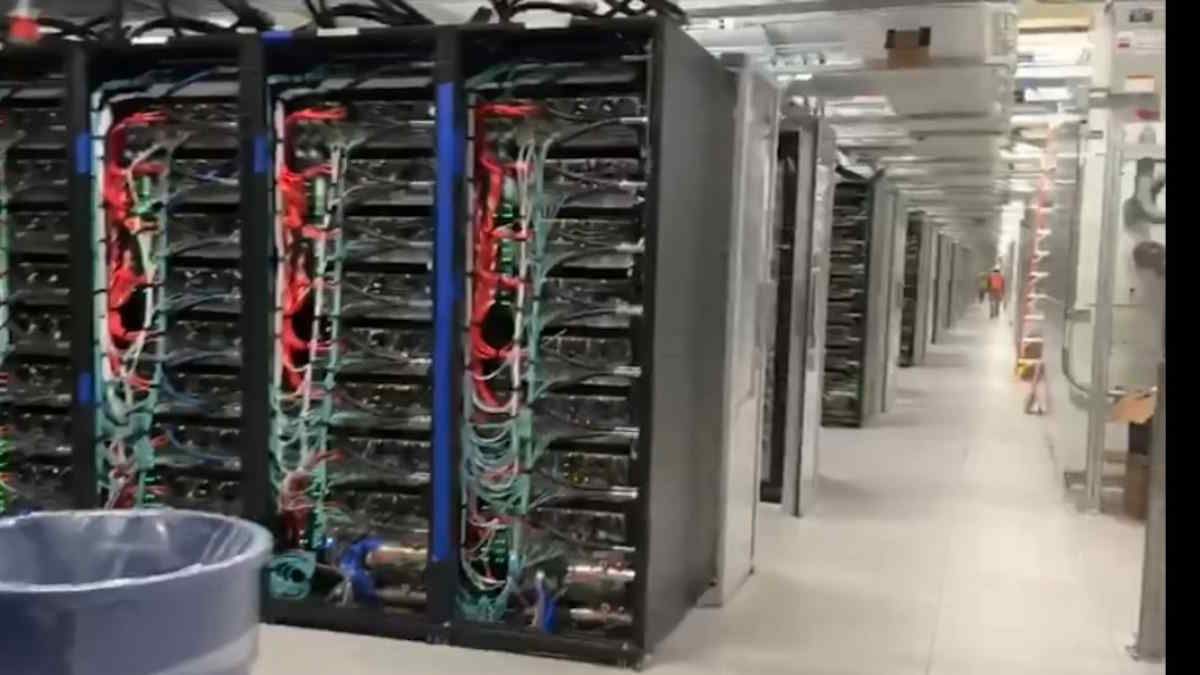Tesla's New AI Supercomputing Cluster: A Deep Dive into Cortex
Tesla, under the visionary leadership of Elon Musk, has embarked on an ambitious project that could redefine the landscape of artificial intelligence and autonomous technology.
Nestled within the sprawling complex of Giga Texas, Tesla's latest venture, dubbed "Cortex," represents not just a supercomputer, but a monumental leap towards achieving full self-driving capabilities and advanced robotics through AI training.
The Birth of Cortex
The inception of Cortex was marked by Musk's revelation on X, where he shared a glimpse into what would become one of the most powerful AI training facilities globally.
Cortex, named after the cerebral cortex, the part of the brain responsible for higher cognitive functions, aims to mirror this complexity in silicon, focusing on processing vast amounts of data to train neural networks for Tesla's autonomous driving technology and the Optimus robot.
Technical Marvels of Cortex
Cortex is not just about scale, but also about capability. It's equipped with over 100,000 Nvidia H100 and H200 GPUs, which are among the most advanced GPUs available, known for their prowess in AI training.
This setup is designed to handle the computational load of processing video footage from millions of Tesla vehicles worldwide, turning raw data into actionable insights for autonomous driving algorithms.
The power requirements of Cortex are staggering, initially needing 130 MW for cooling, with plans to scale up to over 500 MW, equivalent to powering a small city.
This massive energy demand is met through innovative cooling solutions, including giant fans and water tanks, showcasing Tesla's engineering ingenuity in managing heat dissipation for such high-performance computing.
Video of the inside of Cortex today, the giant new AI training supercluster being built at Tesla HQ in Austin to solve real-world AI pic.twitter.com/DwJVUWUrb5
— Elon Musk (@elonmusk) August 26, 2024
The Strategic Importance of Cortex
Tesla's pivot towards AI, with Cortex at its core, underscores a strategic shift. While the automotive industry has been Tesla's battleground, the war for supremacy in AI and autonomous technology is where Tesla aims to cement its future.
Cortex isn't just about making cars drive themselves; it's about creating a platform where AI can learn from real-world data at an unprecedented scale, potentially revolutionizing not just transportation but various sectors through AI-driven solutions.
Challenges and Expectations
The journey to operationalizing Cortex hasn't been without hurdles. Delays in construction and the integration of such a massive computing cluster highlight the challenges of pioneering at this scale.
However, these challenges are met with the expectation that Cortex will not only accelerate Tesla's path to full autonomy but also significantly enhance the capabilities of Optimus, Tesla's humanoid robot project.
Public and Industry Reaction
The announcement of Cortex has stirred a mix of awe and skepticism within tech and automotive circles. While some marvel at the sheer ambition and potential of such a supercomputer, others question the practicality and the timeline for delivering on the promises of full self-driving technology.
Public sentiment, as reflected on platforms like X, ranges from excitement about Tesla's future in AI to concerns over the real-world application timeline.
Looking Ahead
As Tesla continues to refine and expand Cortex, the world watches with bated breath. This supercomputing cluster isn't just a piece of hardware; it's a testament to Tesla's commitment to redefine what's possible with AI.
Whether Cortex will lead Tesla to achieve its ambitious goals in autonomous driving and robotics remains to be seen, but its existence alone pushes the boundaries of what we understand by computational power in the service of AI.
Tesla's Cortex represents more than just technological advancement; it's a bold statement on the future of AI, autonomy, and perhaps, the very essence of innovation in the digital age.
As Tesla gears up to fully operationalize Cortex, the implications of this supercomputing cluster could extend far beyond the automotive industry, influencing how we interact with technology in our daily lives.
What do you think of Tesla's giant AI supercomputing cluster? Will this help Tesla get to FSD Level 5?
Share this article with friends and family and on social media - or leave a comment below. You can view my most recent articles here for further reading. I am also on X/Twitter where I post more than just articles daily, as well as LinkedIn! Thank you so much for your support!
Want a Tesla and $1,000 off? Be sure to use my referral code.
Hi! I'm Jeremy Noel Johnson, and I am a Tesla investor and supporter and own a 2022 Model 3 RWD EV and I don't have range anxiety :). I enjoy bringing you breaking Tesla news as well as anything about Tesla or other EV companies I can find, like Aptera. Other interests of mine are AI, Tesla Energy and the Tesla Bot! You can follow me on X.COM or LinkedIn to stay in touch and follow my Tesla and EV news coverage.
Image Credit: Tesla, Screenshot
Article Reference: Tesla





